Solar System is a planetary system that includes the central star – the Sun, and all the natural cosmic objects (planets, asteroids, comets, solar wind streams, etc.) that are bound by gravitational interaction. The Solar System formed about 4.6 billion years ago. The Solar System is part of the Milky Way galaxy.
Sometimes the Solar System is divided into regions. The inner part of the Solar System includes four terrestrial planets and the asteroid belt. The outer part begins beyond the asteroid belt and includes four gas giants. After the discovery of the Kuiper Belt, the most distant part of the Solar System is considered to be the region consisting of objects located beyond Neptune. Composition of the Solar System
The Solar System consists of the Sun and all objects that orbit it due to gravity.
Sun

The Sun is the star at the center of the Solar System. It is the most massive object in the system and accounts for most of its gravitational pull. The Sun is a yellow dwarf that emits light and heat through nuclear fusion.
98% of the Sun’s mass consists of hydrogen and helium, but it also contains all known chemical elements. The Sun is brighter than 85% of the stars in the galaxy, and its surface temperature exceeds 5700°C.
Planets
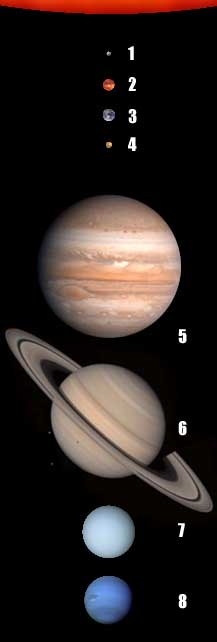
Planets are large, round objects that orbit the Sun and have enough mass to gravitationally retain their own atmospheres. In the Solar System, there are eight planets: four inner planets – Mercury, Venus, Earth, and Mars, also known as terrestrial planets. And four large gaseous planets – Jupiter, Saturn, Uranus, and Neptune, known as gas giants.
Mercury
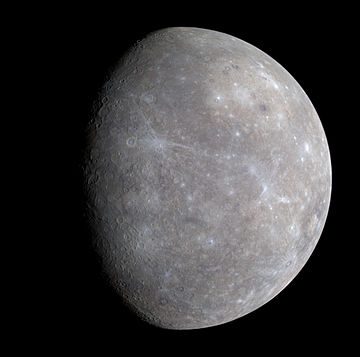
Mercury is the closest planet to the Sun in the Solar System and the first planet from it. After Pluto was stripped of its planetary status, Mercury became the smallest planet in the Solar System. Mercury was quite poorly studied until the advent of interplanetary missions. However, in 1974-1975, the American mission “Mariner 10” flew by Mercury three times, and the “Messenger” mission (2004-2015) orbited the planet and collected detailed data about its structure.
- Diameter: 4,880 kilometers (3,032 miles)
- Mass: 3.301 × 10²³ kilograms (7.259 × 10²² pounds)
- Gravity: 3.7 m/s² (0.38 g)
- Atmosphere: Thin exosphere consisting of hydrogen, helium, oxygen, and potassium.
- Surface Temperature: From -173°C to 427°C (-280°F to 797°F)
- Length of Day: 4224.2 Earth hours
- Orbital Period (Year): 88 Earth days
- Distance from the Sun: 47.8 million kilometers (29.7 million miles)
- Satellites: None
Venus
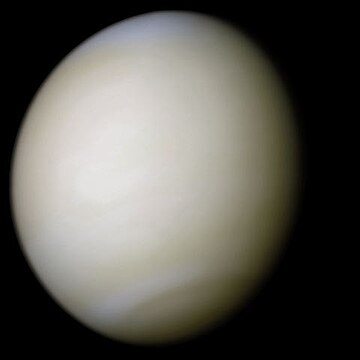
Venus is the second planet from the Sun and the sixth largest planet in the Solar System. It is often called the “sister planet” of Earth due to its similar size and composition. Venus rotates around its axis in the opposite direction to most other planets, which means the Sun rises in the west and sets in the east.
- Diameter: 10,563 kilometers (6,571 miles)
- Mass: 4.867 × 10²⁴ kilograms (1.08 × 10²⁵ pounds)
- Gravity: 8.87 m/s² (0.904 g)
- Atmosphere: Dense atmosphere, primarily composed of carbon dioxide (96%) and nitrogen (3%).
- Surface Temperature: 462°C (864°F)
- Length of Day: 243 Earth days
- Orbital Period (Year): 225 Earth days
- Distance from the Sun: 108 million kilometers (67 million miles)
- Satellites: None
Earth

Earth is the third planet from the Sun and the only known planet where life exists. Earth is the only known object in the Universe where life exists. Living organisms can adapt to various environments and occupy different ecosystems, including oceans, forests, deserts, polar regions, and more.
- Diameter: 12,742 kilometers (7,918 miles)
- Mass: 5.972 × 10²⁴ kilograms (1.317 × 10²⁵ pounds)
- Gravity: 9.807 m/s² (1 g)
- Atmosphere: 78% nitrogen, 21% oxygen, 1% other gases
- Average Surface Temperature: 15°C (59°F)
- Length of Day: 24 hours
- Orbital Period (Year): 365.25 days
- Distance from the Sun: 149.6 million kilometers (93 million miles)
- Satellites: 1 (Moon)
Mars
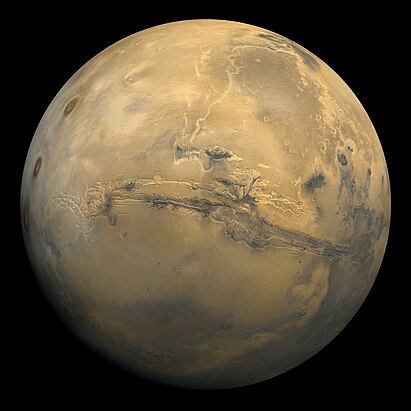
Mars is the fourth planet from the Sun in the Solar System and one of the most studied planets. Known since ancient times as one of the brightest objects in the sky and visible to the naked eye, it is named after Mars, the Roman god of war.
Mars is studied by various space agencies, including NASA, the European Space Agency (ESA), and others. Interest in Mars has increased in recent years, and many missions, such as “Mars 2020,” have been sent to the planet.
- Diameter: 6,779 kilometers (4,234 miles)
- Mass: 6.42 × 10²³ kilograms (1.41 × 10²⁴ pounds)
- Gravity: 3.72 m/s² (0.38 g)
- Atmosphere: 95% carbon dioxide, 2.7% nitrogen, 1.6% argon, 0.13% oxygen, and 0.08% other gases
- Average Surface Temperature: -63°C (-81°F)
- Length of Day: 24.6 hours
- Orbital Period (Year): 687 Earth days
- Distance from the Sun: 227.9 million kilometers (141.6 million miles)
- Satellites: 2 (Phobos, Deimos)
Jupiter

Jupiter is the fifth planet from the Sun and the largest planet in the Solar System. It is known for its massive size, gravitational influence, and impressive storms. Classified as a gas giant, it is primarily composed of hydrogen and helium. Jupiter has a massive mass, greater than that of all the other planets in the Solar System combined.
Jupiter is studied through space missions such as “Pioneer,” “Voyager,” “Galileo,” “Juno,” and others. The NASA-launched “Juno” mission explores Jupiter’s atmosphere, magnetosphere, and other aspects.
- Diameter: 142,984 kilometers (88,849 miles)
- Mass: 1.898 × 10²⁷ kilograms (4.194 × 10²⁷ pounds)
- Gravity: 24.79 m/s² (2.528 g)
- Atmosphere: 85% hydrogen, 13% helium, 2% other gases
- Average Surface Temperature: -145°C (-233°F)
- Length of Day: 9.93 hours
- Orbital Period (Year): 11.86 Earth years
- Distance from the Sun: 778.5 million kilometers (483.3 million miles)
- Satellites: 79 (known)
Saturn

Saturn is the sixth planet from the Sun and the second largest planet in the Solar System. It is classified as a gas giant planet because it is primarily composed of hydrogen and helium. Saturn has a prominent ring system consisting mostly of ice particles, with a smaller amount of heavier elements and dust.
Saturn is studied through space missions such as “Voyager 1,” “Voyager 2,” “Cassini,” and others. The “Cassini” mission conducted a detailed investigation of Saturn and its moons, including studies of its rings and atmosphere.
- Diameter: 120,536 kilometers (74,600 miles)
- Mass: 5.68 × 10²⁶ kilograms (1.27 × 10²⁷ pounds)
- Gravity: 10.8 m/s² (1.08 g)
- Atmosphere: 96% hydrogen, 3% helium, 1% other gases
- Average Surface Temperature: -178°C (-290°F)
- Length of Day: 10.7 hours
- Orbital Period (Year): 29.5 Earth years
- Distance from the Sun: 1,429 million kilometers (886 million miles)
- Satellites: 82 (known)
Uranus

Uranus is the seventh planet from the Sun in the Solar System and the third largest planet.
Uranus has a unique rotational axis, which is almost tilted at 98 degrees to the plane of its orbit. This means that Uranus rotates on its side, rather than upright like most other planets.
Uranus’s largest moon, Titania, has a thick atmosphere and sparse lakes and seas of methane and ethane.
Uranus has been studied by remote exploration using spacecraft. One of the most significant was the Voyager 2 project, which traversed the Solar System and provided a significant amount of data about Uranus and its moon system.
- Diameter: 51,118 kilometers (31,786 miles)
- Mass: 8.69 × 10²⁵ kilograms (1.92 × 10²⁶ pounds)
- Gravity: 8.69 m/s² (0.889 g)
- Atmosphere: 51% hydrogen, 32% helium, 17% methane, 2% other gases
- Average Surface Temperature: -224°C (-371°F)
- Length of Day: 17.2 hours
- Orbital Period (Year): 84 Earth years
- Distance from the Sun: 2,871 million kilometers (1,788 million miles)
- Satellites: 27 (known)
Neptune

Neptune is the eighth and farthest planet from the Sun in the Solar System. It is a gas giant similar in composition and atmosphere to Uranus. Neptune has the strongest winds in the Solar System and also features the Great Dark Spot, an anticyclonic storm.
To study Neptune, spacecraft missions have been utilized, including the Voyager 2 mission. This spacecraft provided a significant amount of data about Neptune and its moons, allowing for a more detailed study of this planet and learning more about its atmosphere, structure, and peculiarities.
- Diameter: 49,528 kilometers (30,776 miles)
- Mass: 1.02 × 10²⁶ kilograms (2.25 × 10²⁶ pounds)
- Gravity: 11.15 m/s² (1.14 g)
- Atmosphere: 80% hydrogen, 19% helium, 1% methane, 0.016% other gases
- Average Surface Temperature: -218°C (-354°F)
- Length of Day: 16.1 hours
- Orbital Period (Year): 164.8 Earth years
- Distance from the Sun: 4,504 million kilometers (2,793 million miles)
- Satellites: 14 (known)
Dwarf Planets
Dwarf planets are small, round objects that orbit the Sun but do not meet all the criteria for planets. In the Solar System, there are five dwarf planets:
Ceres
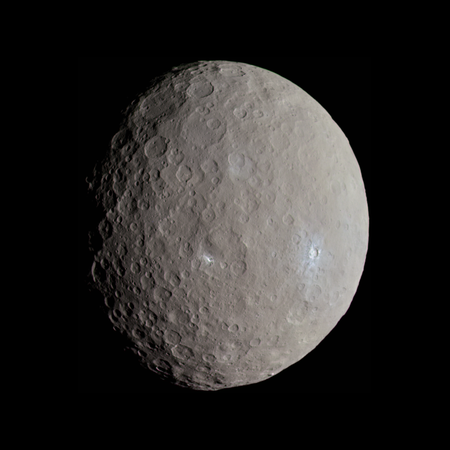
Ceres is a dwarf planet, not a planet. It is the largest known object in the asteroid belt located between Mars and Jupiter. Discovered on January 1, 1801, by the Italian astronomer Giuseppe Piazzi at the Palermo Astronomical Observatory.
- Diameter: 950 kilometers (590 miles)
- Mass: 4.7 × 10²⁴ kilograms (1.0 × 10²⁵ pounds)
- Gravity: 0.27 m/s² (0.027 g)
- Surface: Ceres has a rocky surface with numerous craters and possibly water ice.
- Atmosphere: Ceres has a thin atmosphere of water vapor.
Pluto
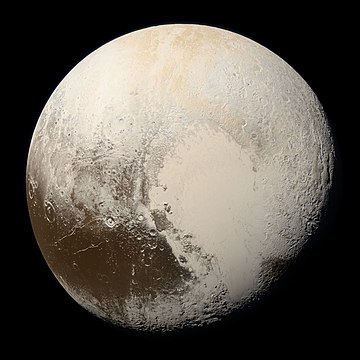
Pluto is a dwarf planet located in the Kuiper Belt beyond Neptune’s orbit. It was the ninth planet from the Sun from its discovery in 1930 until 2006 when the International Astronomical Union (IAU) redefined the definition of a planet. Pluto is now classified as a dwarf planet.
Pluto was explored by the New Horizons spacecraft in 2015. This mission provided us with the first detailed images of the planet and its moons. New Horizons also revealed that Pluto has a thick layer of ice that may conceal a subsurface ocean of liquid water.
Haumea

Haumea is a dwarf planet located in the Kuiper Belt, similar to Pluto. It was discovered in 2004 by Mike Brown and his colleagues. Its name comes from the Hawaiian goddess of fertility and childbirth.
- Diameter: 1150 × 690 × 400 kilometers (710 × 430 × 250 miles)
- Mass: 4.004 × 10^21 kg (8.82 × 10^19 pounds)
- Gravity: 0.401 m/s² (0.041 g)
- Surface: Haumea’s surface is covered with water ice, with possible patches of ammonia and organic compounds.
- Atmosphere: Haumea has a thin atmosphere composed of hydrogen.
- Satellites: It has 2 satellites with orbital periods of 34 and 49 days.
Makemake
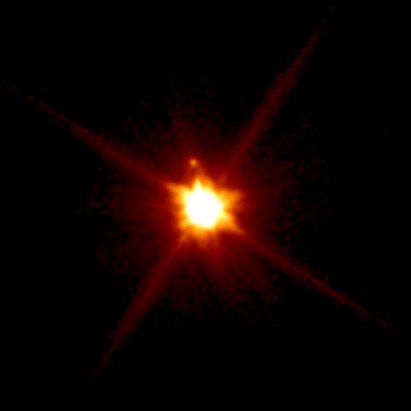
Makemake is another dwarf planet located in the Kuiper Belt, similar to Pluto and Haumea. Its discovery was announced on July 29, 2005 — the same day as two other large trans-Neptunian objects: Haumea and Eris. In April 2015, using the Hubble Space Telescope, a moon of the dwarf planet Makemake was discovered, and its discovery was announced on April 26, 2016. It was given the temporary designation S/2015 (136472) 1 and the nickname MK 2.
Eris

Eris is a dwarf planet that orbits the Sun in the Kuiper Belt, beyond the orbit of Neptune. It was discovered in 2003 by a team led by Michael Brown of the California Institute of Technology.
- Diameter: 2370 kilometers (1470 miles)
- Mass: (1.67 ± 0.03) × 1022 kg ((3.69 ± 0.07) × 1021 pounds)
- Gravity: 0.404 m/s² (0.041 g)
- Surface: Eris’s surface is covered with water ice and methane. It also has dark spots believed to be composed of organic compounds.
Asteroids
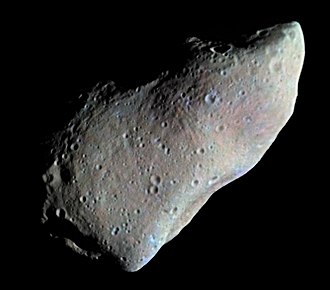
Asteroids are small, rocky objects that orbit the Sun.
The asteroid belt (main belt) is an area of the Solar System located between the orbits of Mars and Jupiter and is a cluster of millions of objects of various shapes and sizes. These are small bodies of irregular shape ranging in size from 1 km to 1000 km. Today, there are about 2 million such bodies in the asteroid belt.
Their total mass is approximately 3×1021 — 3.6×1021 kg, which accounts for only 4% of the mass of the Moon.
There are groups of asteroids both within and beyond the main belt:
- Near-Earth asteroids — asteroids with orbits that are close to the Earth’s orbit. Some of them, such as the Apollo group and the Aten group, cross the Earth’s orbit and potentially pose a collision risk, so they are closely monitored;
- Trojan asteroids — they are under the strong gravitational influence of Jupiter and are synchronized with its motion. Trojans are located ahead of or behind Jupiter on its orbit. Trojans have also been discovered around Neptune and Mars;
- Centaurs — asteroids whose orbits lie between the orbits of Jupiter and Neptune.
Comets
Comets are icy, dusty objects that orbit the Sun. When a comet approaches the Sun, it heats up, causing its ice to sublime and form a tail.
The most well-studied comet is Halley’s Comet, named after the English astronomer Edmond Halley, who calculated its orbit. It completes one orbit around the Sun every 76 years.
Interstellar dust
Interstellar dust consists of tiny particles of dust and ice scattered throughout the Solar System. Typical dust grains range in size from 0.01 to 0.2 micrometers and have a dense core surrounded by an icy shell and volatile substances. Finer graphite and silicate dust grains lack shells.